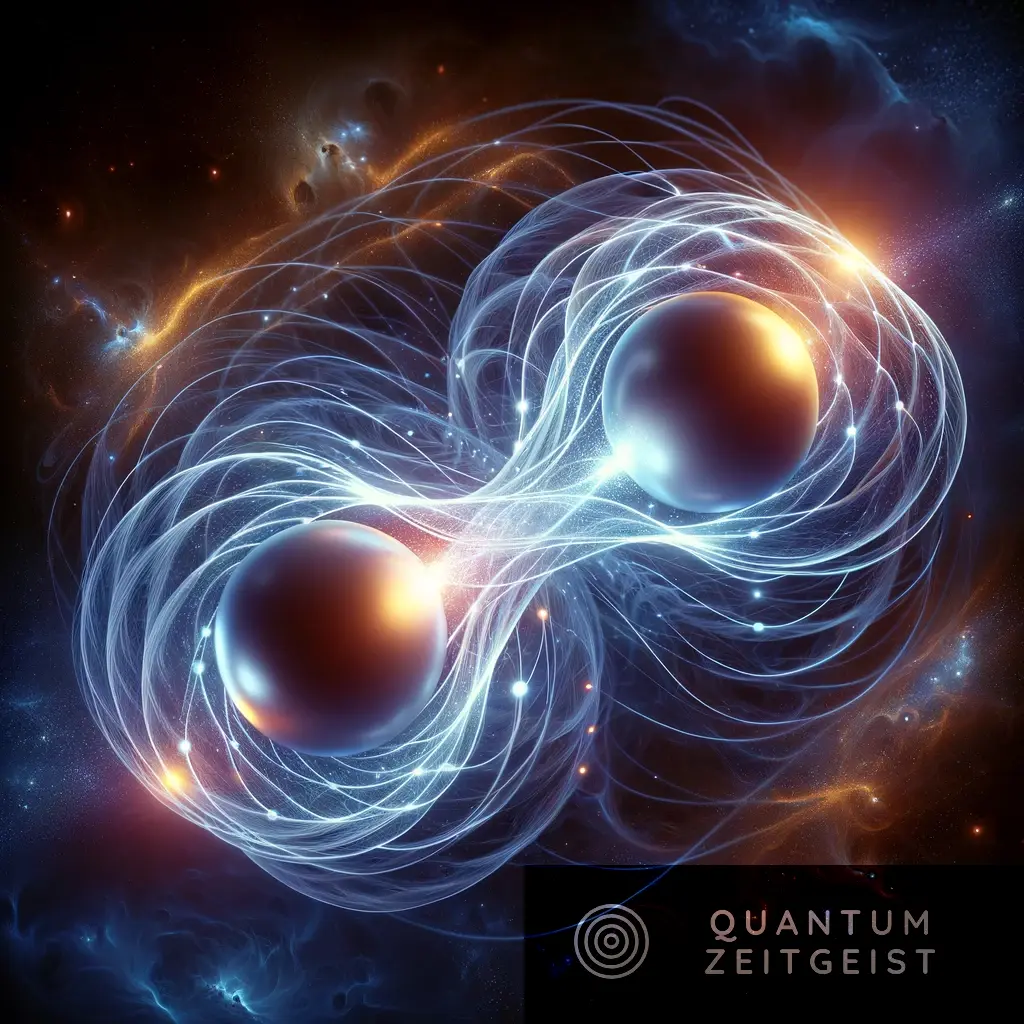Quantum mechanics, a fundamental theory in physics, provides a radical departure from classical physics, presenting a complex yet fascinating view of the natural world. Among its many intriguing aspects, quantum entanglement is a phenomenon that defies classical intuitions. This article explores quantum entanglement from its conceptual foundation to its groundbreaking applications in quantum computing and cryptography.
Quantum Entanglement
Understanding Quantum Mechanics Basics
At the heart of quantum mechanics lies the concept of superposition. Unlike classical bits, which are either 0 or 1, quantum bits or qubits can exist in a state of 0, 1, or any quantum superposition of these states. This allows them to hold and process vast amounts of information compared to their classical counterparts, setting the stage for revolutionary computing capabilities.
Exploring Quantum Entanglement
Quantum entanglement, first described in a 1935 paper by Einstein, Podolsky, and Rosen, and further elucidated by John Bell in 1964, is a property where particles become intertwined in such a way that the state of one particle instantly influences the state of the other, no matter the distance separating them. This non-locality challenges classical notions of space and time.
Quantum entanglement occurs when pairs or groups of particles interact so that the quantum state of each particle cannot be described independently of the others. This phenomenon was first highlighted in the famous Einstein-Podolsky-Rosen (EPR) paradox, challenging the notions of locality and reality in quantum mechanics. Bell’s theorem later tested the EPR paradox, leading to experiments that confirmed the non-local properties of entangled particles.
Spooky Action at a Distance
“Spooky action at a distance” is a term famously coined by Albert Einstein to describe the puzzling phenomenon of quantum entanglement. It refers to how two or more particles can become entangled so that the state of one particle is instantly correlated with the state of the other, regardless of the distance separating them. This instantaneous connection seems to defy the classical understanding of space and time, as the changes appear to occur faster than the speed of light would allow for any communication between the particles.
Einstein used this term to express his discomfort with this aspect of quantum mechanics, which seemed to contradict the principle of locality in classical physics. Locality asserts that physical processes occurring at one point in space should have no immediate effect on elements in another location. However, the entanglement phenomenon suggested otherwise, leading to deep philosophical and scientific debates about the nature of reality.
Quantum Entanglement in Computing
In quantum computing, entanglement is not just a curious phenomenon but a powerful resource. It allows quantum computers to perform many calculations simultaneously, a feature that can potentially solve problems intractable for classical computers. Algorithms like Shor’s, which efficiently factorizes large numbers, rely on entanglement to achieve speeds unattainable by classical counterparts.
Quantum Entanglement and Quantum Algorithms
Quantum algorithms leverage the principles of superposition and entanglement to solve problems more efficiently than classical algorithms. Notable examples include:
- Shor’s Algorithm: Developed by Peter Shor in 1994, this algorithm factors large numbers exponentially faster than the best-known classical algorithm, potentially breaking RSA encryption in the future (if) Quantum Computers become large enough and numerous technical problems are resolved.
- Grover’s Algorithm: Invented by Lov Grover in 1996, this algorithm provides a quadratic speedup for database searching tasks.
- Quantum Fourier Transform (QFT): Central to many quantum algorithms, QFT is an essential component in Shor’s algorithm, offering efficient computation of Fourier transforms on quantum states.
Quantum Cryptography and Communication
One of the most promising applications of quantum entanglement lies in the field of cryptography. Quantum Key Distribution (QKD) uses entangled particles to exchange cryptographic keys securely. These applications are already being used, and companies such as Toshiba are exploiting these properties to make sending data and information more secure. Any attempt to eavesdrop on the key alters the quantum state, alerting the communicating parties. This ensures a level of security that is impossible to achieve with classical methods.
Experimental Realizations and Challenges
Creating and maintaining entangled states is a significant experimental challenge. Laboratory experiments often use photons or atoms cooled to near absolute zero to generate entanglement. The fragility of this state, known as “quantum decoherence,” poses a significant hurdle, making the practical realization of quantum technologies a complex task. Quantum systems are notoriously delicate, and their entangled states can be easily disrupted by environmental interference—a phenomenon previously introduced as quantum decoherence. Despite these challenges, significant progress has been made in generating entangled states in laboratories and real-world conditions.
Future Applications and Theoretical Implications
The potential applications of quantum entanglement are vast, extending to fields like medicine through precise imaging techniques and even space exploration, where entangled particles could enable deep-space communication. Theoretically, entanglement challenges our understanding of space-time and may hold answers to some of the universe’s biggest mysteries.
Quantum Entanglement Quick Summary
Quantum entanglement, with its perplexing properties and wide-ranging applications, is at the forefront of a quantum revolution. As research progresses, we are likely to witness the emergence of technologies that harness the full potential of this quantum marvel, reshaping our world in ways we are just beginning to imagine.
References
- Nielsen, M. A., & Chuang, I. L. (2010). Quantum Computation and Quantum Information. Cambridge University Press.
- Einstein, A., Podolsky, B., & Rosen, N. (1935). Can Quantum-Mechanical Description of Physical Reality Be Considered Complete? Physical Review.
- Bell, J. S. (1964). On the Einstein Podolsky Rosen Paradox. Physics.
- Bennett, C. H., & Brassard, G. (1984). Quantum cryptography: Public key distribution and coin tossing. Proceedings of IEEE International Conference on Computers, Systems, and Signal Processing.
- Shor, P. W. (1997). Polynomial-Time Algorithms for Prime Factorization and Discrete Logarithms on a Quantum Computer. SIAM Journal on Computing.

